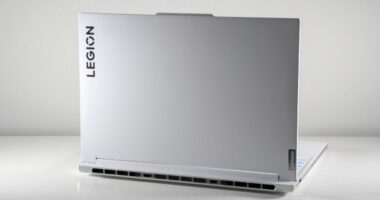Build or Upgrade — The Smart Way
Upgrading your desktop is one of the most rewarding tech projects you can take on in 2025. With component prices finally stabilizing and new-generation GPUs and CPUs delivering unmatched performance per dollar, building or upgrading your PC has never been easier.
This guide walks you step by step through installing a new GPU, CPU, RAM, and SSD, along with cable management and optimization tips — all written in plain English for beginners and hobbyists alike.
1. Preparing for Your Upgrade
Before you start, gather essential tools and ensure safety:
-
Tools Needed: Phillips screwdriver, anti-static wrist strap, thermal paste (for CPU), and a clean workspace.
-
Safety First: Always disconnect your PC from the wall, press the power button for 5 seconds to discharge static, and avoid working on carpeted floors.
Then, take a quick photo of your existing setup — it’ll help you reconnect cables correctly later.
2. Choosing the Right GPU, CPU, RAM, and SSD
Graphics Cards (GPUs)
In 2025, the GPU market is led by:
-
NVIDIA GeForce RTX 4070 Ti Super ($799) – Excellent for 1440p and 4K gaming.
-
AMD Radeon RX 7900 GRE ($649) – A strong midrange option with great VRAM.
-
Intel Arc A770 ($349) – Budget-friendly and surprisingly capable for content creation.
Processors (CPUs)
Pick a CPU that matches your motherboard’s socket:
-
Intel Core i7-14700K ($409) – Best for gamers and streamers.
-
AMD Ryzen 7 9800X3D ($469) – Ideal for gaming efficiency.
-
Intel Core i5-14600 ($279) – Solid midrange value.
Memory (RAM)
Go for at least 32GB DDR5 (5600MHz+) in dual-channel mode for smooth multitasking and gaming. Popular kits include:
-
Corsair Vengeance DDR5 32GB ($149)
-
G.Skill Trident Z5 RGB 32GB ($169)
Storage (SSD)
For lightning-fast load times:
-
Samsung 990 Pro 2TB NVMe ($179)
-
WD Black SN850X 2TB ($159)
-
Crucial P5 Plus 1TB ($99)
3. Step-by-Step: Installing a New GPU
Step 1: Remove the Old GPU
-
Unscrew the PCIe bracket holding your GPU in place.
-
Press the PCIe slot latch gently and pull the card out.
Step 2: Insert the New GPU
-
Align the golden PCIe connector and press firmly until it clicks.
-
Screw it back in securely.
Step 3: Connect Power Cables
Modern GPUs require 8-pin or 12VHPWR connectors. Use the dedicated PSU cables — not split adapters — for safety and power stability.
Step 4: Install Drivers
Boot into Windows 11 → Open GeForce Experience or AMD Adrenalin → Install the latest drivers.
4. Step-by-Step: Installing a New CPU
Step 1: Remove the Old Processor
-
Open the CPU latch on your motherboard.
-
Lift the old CPU gently without bending the pins (for AMD) or contacts (for Intel).
Step 2: Seat the New CPU
-
Match the triangle marker on the CPU with the motherboard socket corner.
-
Gently lower it into place — never force it.
Step 3: Apply Thermal Paste and Mount Cooler
-
Apply a pea-sized drop of thermal paste in the center.
-
Mount your cooler evenly, tightening screws diagonally.
Step 4: Boot and Check Temps
After installation, enter BIOS and monitor temperatures (should be under 80°C on load).
5. Step-by-Step: Upgrading RAM
Step 1: Remove Existing Sticks
Unlock the clips on each side of the RAM slots.
Step 2: Install New RAM
Insert the new sticks until both clips snap into place.
If your motherboard supports XMP or EXPO, enable it in BIOS to run RAM at full speed.
6. Step-by-Step: Installing an NVMe SSD
Step 1: Locate the M.2 Slot
Usually near the PCIe slots or under a heatsink.
Step 2: Insert and Secure
Insert the SSD at a 30° angle, push it down, and fasten the screw.
Step 3: Enable in BIOS
Make sure your drive appears under Storage Devices. Then, format it in Windows using Disk Management.
7. Cable Management 101
Good cable management improves airflow and makes your build look professional.
-
Route cables through the back of the case.
-
Use zip ties or Velcro straps to bundle them neatly.
-
Keep GPU and CPU power cables separate for better airflow.
-
If your PSU is modular, plug in only what’s needed.
Bonus Tip: Use Cable Extensions
Sleeved cable extensions can transform your build’s look for under $25 — perfect for RGB setups.
8. BIOS and Firmware Updates
Once your components are installed, visit your motherboard manufacturer’s site and update to the latest BIOS version.
New BIOS versions improve stability and support for next-gen CPUs and memory.
Always back up your data before flashing!
9. Testing and Benchmarking
After installation:
-
Run Cinebench R24 for CPU performance.
-
Run 3DMark Time Spy for GPU benchmarking.
-
Use CrystalDiskMark to test SSD speeds.
-
Stress-test your system for 10–15 minutes using OCCT or AIDA64.
Keep an eye on temperatures and fan speeds — stable performance under load means success.
10. Windows Optimization After Hardware Upgrade
Enable Hardware-Accelerated GPU Scheduling
Go to Settings → System → Display → Graphics → Default Settings and turn on hardware acceleration.
Reinstall Chipset Drivers
Always update chipset drivers from your motherboard manufacturer — they ensure your CPU and SSD perform optimally.
Adjust Power Mode
In Settings → Power & Battery, select “Best Performance” for high-end desktops or “Balanced” for daily use.
11. Troubleshooting Common Issues
-
PC won’t boot: Reseat GPU and RAM, check PSU connections.
-
No display: Connect monitor to GPU, not motherboard port.
-
High temps: Reapply thermal paste or check fan orientation.
-
Blue screens: Update BIOS and drivers; test RAM with Windows Memory Diagnostic.
12. Estimated Build and Upgrade Costs (2025)
| Component | Example Model | Approx. Price (USD) |
|---|---|---|
| GPU | NVIDIA RTX 4070 Ti Super | $799 |
| CPU | Intel Core i7-14700K | $409 |
| RAM | Corsair Vengeance DDR5 32GB | $149 |
| SSD | Samsung 990 Pro 2TB | $179 |
| PSU | Corsair RM850x | $139 |
| Case | NZXT H7 Flow | $129 |
| Total (Upgrade Build) | ~$1,804 |
13. Final Touches and Aesthetic Add-ons
Add RGB fans, glass panels, or subtle lighting strips to personalize your setup. Modern cases like Lian Li O11 Dynamic EVO ($169) feature excellent airflow and cable routing.
Your desktop will not only perform better but also look like a custom-built masterpiece.
Conclusion: Build Confidently, Upgrade Wisely
By following this guide, you’ve learned how to confidently upgrade your GPU, CPU, RAM, and SSD — the four most impactful components in any desktop. These upgrades can boost performance by 200–400%, extend your system’s life, and save you hundreds compared to buying a prebuilt PC.
Building and upgrading PCs isn’t just a hobby — it’s an investment in performance, creativity, and control.









